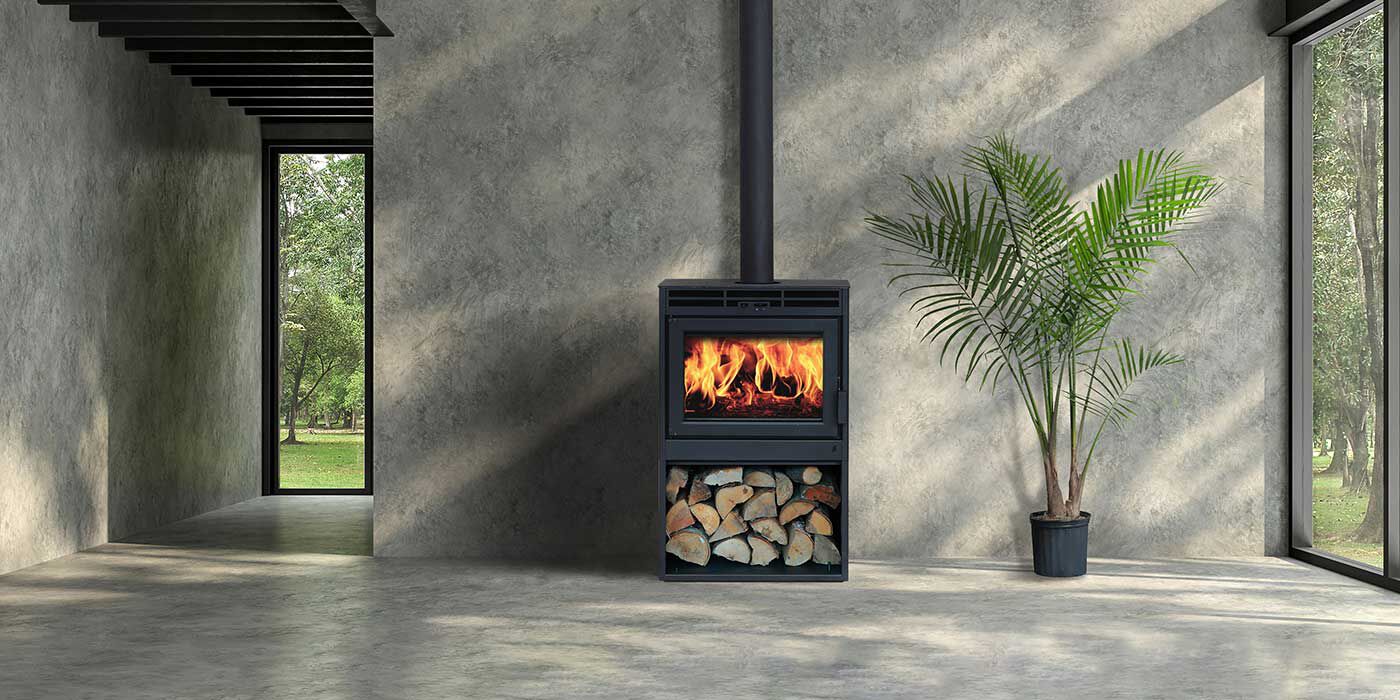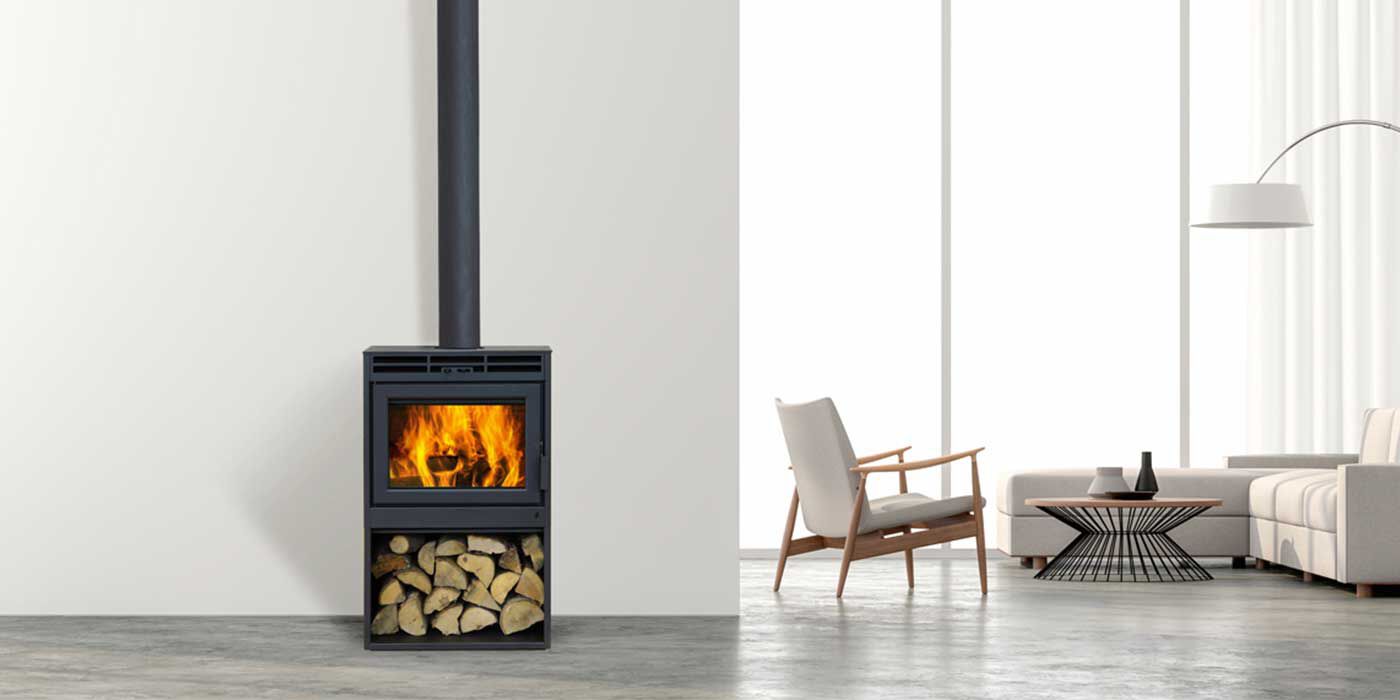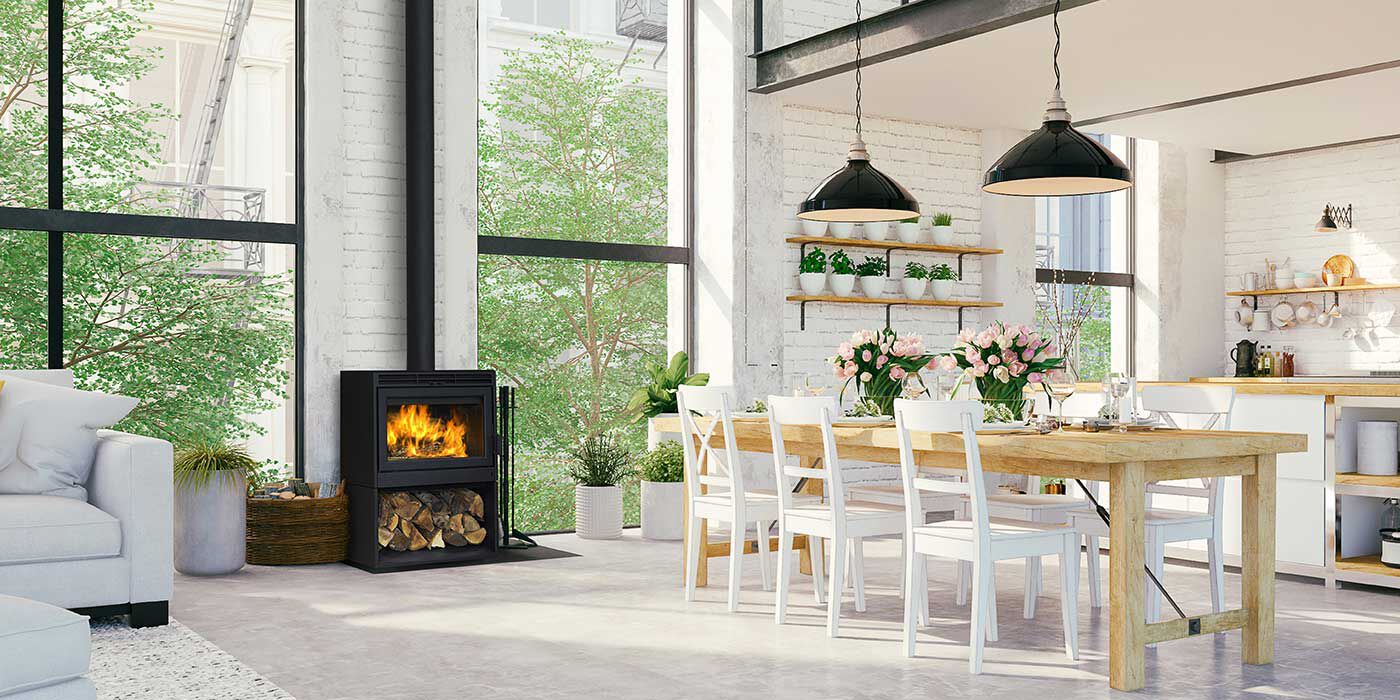By: Tom Regis, NFI Certified Master Hearth Professional
Last Updated: May 14, 2025
Wood burning stoves add warmth and charm to any home, but proper care is essential to ensure they operate efficiently and safely.
Regular maintenance not only prolongs the lifespan of your stove but also enhances its performance and minimizes the risk of dangerous creosote buildup in the chimney.
Follow this step-by-step DIY guide and the owner's manual that comes with your wood stove to keep the heart of your home clean and ready to use for as long as possible.
Step 1: Clean Out the Interior of Your Wood Stove
Before you start cleaning, ensure your stove has cooled down completely to prevent burns and accidents.
Use a poker tool to remove larger pieces of ash and unburned wood. Be careful not to damage the firebox lining.
Empty the ash pan of any remaining ashes, then use a vacuum cleaner to remove fine particles that may have settled.
Check the firebox for any buildup of creosote, a flammable substance that can accumulate on the walls of your wood stove.
If you notice creosote buildup, it's best to consult a professional chimney sweep for a thorough cleaning.
Pro Tip:
Purchase an ash can! Dispose of ashes in a metal container with a lid, as embers can stay hot for days. Store the container outside, away from flammable materials.
Step 2: Clean the Glass Door
Clean glass ensures a crystal-clear view of the flames. Wipe down your glass stove door when it is warm (but not hot) using a damp cloth and a mild detergent.
It’s important to use a cleaning solution specifically designed for wood stove glass. You can also try natural options, like a damp cloth dipped in wood ash, which is gentle and effective at removing soot.
Step 3: Inspect & Clean the Flue
Check the flue monthly during high-use periods for creosote and soot buildup. Even small amounts of creosote can ignite, leading to chimney fires.
Test your stove’s damper to make sure it operates smoothly, making sure it’s clear of debris for proper airflow.
Step 4: Clean the Exterior of Your Wood Stove
Remove dust, debris, and grime from the exterior of your stove using a soft cloth or brush. For more stubborn dirt, you can use a mix warm water and mild detergent in a spray bottle.
Make sure the gaskets around the door and the glass create a tight seal. Loose or worn gaskets allow air to leak, reducing efficiency and causing incomplete combustion.
To check the seal on your door gaskets, shut the door with a dollar bill over the gasket. If it pulls out easily, your gasket will need to be replaced
Additionally, look for cracks or other damage to the firebricks and baffles inside your stove. Cracks can worsen over time and reduce the stove’s efficiency, so it’s essential to replace damaged parts right away.
Step 5: Schedule a Chimney Inspection
While regularly cleaning and inspecting your wood stove at home keeps it functioning safely and efficiently, you’ll also need to hire a licensed professional who can inspect and clean your chimney and stove components at least once a year.
Reach out to a local NFI certified professional or licensed general contractor who has experience servicing and cleaning wood burning stoves to schedule your annual inspection.
Wood Stove Operation Tips
🔥 Tip #1: Only Burn Seasoned Wood
Always burn seasoned hardwoods like oak, hickory, and maple. These types of wood are dense, burn hotter, and produce less creosote.
Seasoned hardwoods also burn for much longer than softwoods, like pine.
Softwoods tend to produce more sap and cause creosote buildup, which can damage your stove and lead to a fire hazard.
🔥 Tip #2: Maintain Proper Ventilation
Ensure your stove has sufficient airflow to prevent smoke and gases from entering your home.
If you have a tightly sealed home, consider adding an air vent nearby to allow for fresh air intake.
🔥 Tip #3: Use a Stove Thermometer
Burning at a temperature that’s too low can cause creosote buildup, while burning too hot can damage your stove.
With a stove thermometer, you’ll always know if your stove is burning at an optimal temperature.
People Also Ask
How do I clean the glass on my wood stove without scratching it?
Use a glass cleaner specifically designed for stove glass or a vinegar-water solution. Apply it gently with a soft cloth in a circular motion to avoid scratching. Avoid using abrasive pads.
Can I use a regular cleaner to clean my wood stove?
No, you should use heat-resistant cleaners or polishes that are made for wood stoves. Regular household cleaners can release harmful fumes when heated.
How do I clean a stove top on a wood stove?
Use a wire brush or scraper for debris, then wipe down the stove top with a damp cloth. If it's cast iron, follow up with stove polish to protect it.
What’s the best way to clean a cast iron wood stove?
Use a dry or slightly damp cloth to remove dust and ash. For deeper cleaning, apply stove polish made for cast iron surfaces. This helps restore the finish and protect it from rust.
How often should I do chimney cleaning for my wood stove?
You should perform chimney cleaning at least once a year, or more often if the stove is used heavily. Regular cleaning prevents creosote buildup and reduces the risk of chimney fires.
How can I clean the inside of a wood stove chimney?
Insert a chimney brush into the wood stove chimney from the top or bottom. Make sure the brush is the right diameter to effectively remove soot and creosote.
What is the best way to clean a chimney pipe on a wood stove?
Detach the chimney pipe if possible and use a chimney brush sized for your pipe. Clean from the top down or bottom up, depending on access. Wear protective gear to avoid soot exposure.
We’re Here to Help
Have more questions about wood stoves? We’d be happy to help! Reach out to one of our NFI Certified experts today at 800.919.1904.
More Resources
Find the perfect wood stove for your space with this ultimate buying guide.
Does your wood stove qualify for tax breaks? Learn more here.
Discover why seasoning your firewood before burning is essential.
 |
Thomas Regis has been a Technical Sales Representative at Woodland Direct for four years. An NFI-Certified expert, Thomas effortlessly directs his clients toward the perfect products, offering essential installation and safety advice. He's tackled projects of all sizes, from backyard fire pits to custom indoor fireplaces. He has even helped Amy Adams, owner of the Tennessee Titans, find a new fireplace for her home! Beyond his professional achievements, Thomas actively participates in community service projects and enjoys spending time on the basketball court. Call him or one of our experts in fire at 800.919.1904. |





